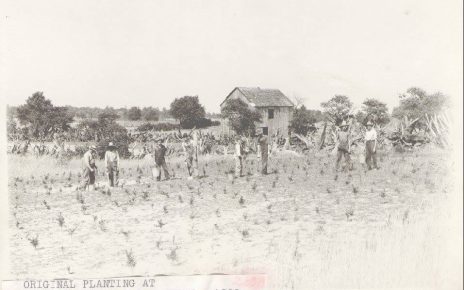The St. Williams Conservation Rese rve includes 1035 hectares of Crown land in Norfolk County, Ontario. The Reserve is made up of two separate sites: the Nursery Tract and the Turkey Point Tract. These two tracts are also designated as the E.C. Zavitz Forest and the J. H. White Forest, respectively, in recognition of the two men who played key roles in the acquisition and reforestation of these lands in the last century. Click HERE for maps of the properties.
rve includes 1035 hectares of Crown land in Norfolk County, Ontario. The Reserve is made up of two separate sites: the Nursery Tract and the Turkey Point Tract. These two tracts are also designated as the E.C. Zavitz Forest and the J. H. White Forest, respectively, in recognition of the two men who played key roles in the acquisition and reforestation of these lands in the last century. Click HERE for maps of the properties.
Re-building vital ecosystems to honour Ontario’s heritage
The St. Williams Conservation Reserve is nationally renowned for its rare and sensitive ecosystems. It is an important site for the conservation of biological diversity and natural heritage, especially that of the oak savanna and prairie communities. A primary objective for the management of the Reserve is to restore and enhance the native ecological communities at this site, which will benefit the many rare and threatened species that live here.
MORE about the vision for the Conservation Reserve
A long history of ecosystem restoration
Over 200 years ago, this area was covered in a mosaic of oak savanna, sand barrens, Carolinian forests, and wetlands. During the 19th century, many of these lands were deforested or cleared for agriculture by the European settlers, and erosion further degraded the land. In the early 20th century, efforts restore these wastelands began: Ontario’s first forest station was established here in 1908, and pine plantations helped stabilize the blow sands. As a result of these early reforestation efforts, much of the Conservation Reserve is now blanketed by pine plantations and mixed cultural forests, and remnants of the natural ecosystems have survived.
Restoration of these lands in the 21st century will focus on expanding and enhancing the natural ecosystems and biodiversity. Some examples of the historic pine plantations will be maintained to represent and honour the success of the foresters and conservationists of the last century who were able to convert barren wastelands into productive forests.
MORE about the history of the Conservation Reserve




